The 30 best classic horror movies of all time
From early German Expressionist works like "Nosferatu" to Japanese anthologies like "Kwaidan," these films still feel fresh.
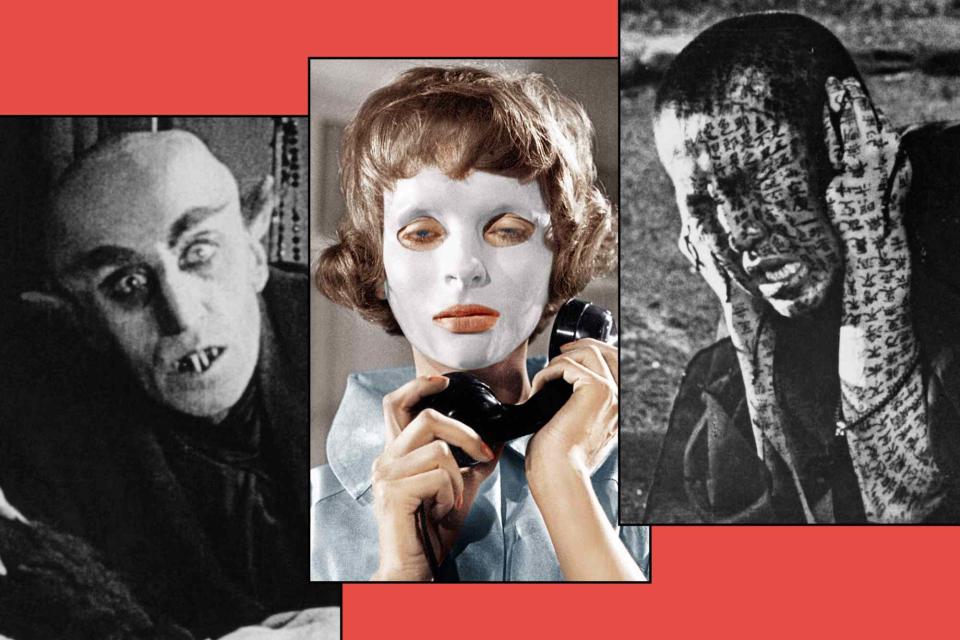
Everett Collection (2); Toho/Getty
Horror is thriving in 2024 — it’s the few genres that are still a sure bet at the box office, delivering maximum returns on minimal budgets. The popularity of scary movies is nothing new, however. Movies designed to frighten thrill-seekers have been an essential part of cinema since the silent era, when titles like The Cabinet of Dr. Caligari, Nosferatu, and The Phantom of the Opera laid the foundations of the genre.
Scholars generally agree that horror entered the modern age in 1968, with the release of George Romero’s game-changing zombie movie Night of the Living Dead. Directors like
John Carpenter, Tobe Hooper, and William Friedkin would go on to construct a more extreme, contemporary style of horror, but none of them would have succeeded without the films featured on this list. Sure, some of them are creaky, old-fashioned chillers — and what’s wrong with that? If you dig into the history of horror, you’ll find classics that still feel fresh and even shocking, made by filmmakers whose artistry and imagination continue to inspire.
Here are EW’s picks for the 30 best classic horror movies, listed in chronological order.
The Cabinet of Dr. Caligari (1920)

Roger Ebert called it “the first true horror film,” and this masterpiece was indeed profoundly influential in the development of the genre. But in some ways, it still stands alone more than 100 years after its release. Werner Krauss and Conrad Veidt lead the cast as the villainous Dr. Caligari and his “somnambulant” creation Cesare. But the true star of Robert Wiene’s silent classic is the German Expressionist set design, whose jarring angles and dramatic shadows enhance its tale of murder and madness.
Where to watch The Cabinet of Dr. Caligari: Tubi
The Golem (1920)

Courtesy Everett
Combining centuries-old Jewish folklore with the then-new medium of cinema, Paul Wegener and Carl Boese’s pioneering horror film draws its inspiration from a legend about a life-sized clay figure — a golem — that came to life to protect the Jews of Prague. The movie follows a similar arc, with an additional subplot in which the creature destroys the city while under the influence of a powerful demon. The special effects retain their otherworldly magic over 100 years later, particularly in the scene where Rabbi Loew (Albert Steinruck) breathes life into the golem.
Where to watch The Golem: YouTube
The Phantom Carriage (1921)
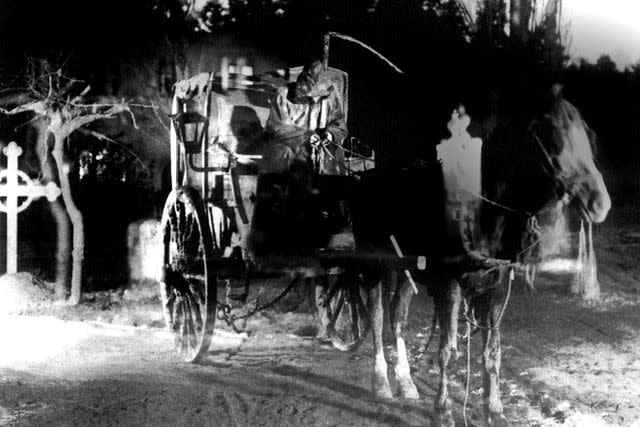
Courtesy Everett
This early landmark of Swedish cinema was one of Ingmar Bergman’s favorite movies, and the influence is obvious in eerie scenes where a ghostly driver dressed like the Grim Reaper roams the countryside searching for souls. Much of the film’s runtime is dedicated to a time-hopping morality tale in the vein of A Christmas Carol, but even these sections build to horrific moments as alcoholic absentee father David Holm (Victor Sjöström) realizes the true consequences of his selfish actions. In a word, it’s haunting.
Where to watch The Phantom Carriage: YouTube
Häxan: Witchcraft Through the Ages (1922)
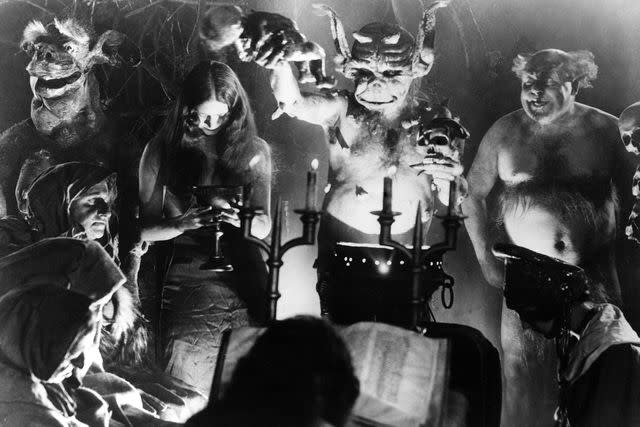
A perpetual favorite for live scores by heavy metal bands, this phantasmagorical trip through the history of the occult also comes from Sweden. Its depictions of dancing devils and witches’ sabbaths are supposed to scare viewers straight, but writer-director Benjamin Christensen is also sympathetic towards the plight of medieval women persecuted for witchcraft. Combined with its unconventional structure, this then-enlightened point of view makes the movie a surprising blend of fire-and-brimstone scares and progressive thought.
Nosferatu (1922)

There are images in Nosferatu that will stay with you forever: The shadow of Count Orlok’s (Max Schreck) claw-like fingernails and hunched back as he creeps up a staircase in the middle of the night, the creature’s crooked teeth and blank stare. Where most adaptations of Dracula depict the Count as a sexy aristocrat, Schreck and director F.W. Murnau made him into a scurrying animal. The result was captivating — so much so that Nosferatu persisted as a cult film even after a judge ordered all copies to be destroyed in a copyright dispute with the Stoker estate.
Where to watch Nosferatu: Tubi
The Phantom of the Opera (1925)

Actor and makeup artist Lon Chaney was nicknamed “the man of a thousand faces,” and he revealed one of his most memorable ones in this silent adaptation. For his role as Erik, the disfigured organist who haunts the catacombs of the Paris opera house, Chaney underwent a dramatic — and painful — transformation that involved pulling back his nostrils with piano wire to create a skeletal look. The unmasking of the titular Phantom is one of the most famous film moments of the silent era, and also one of the most shocking.
Where to watch The Phantom of the Opera: Tubi
Faust (1926)

Mary Evans/AF Archive/Everett Collection
Less overtly a horror movie than Nosferatu, F.W. Murnau’s final German film rides the line between fantasy and horror, crafting fantastical visuals and layering them on top of a dark fairy tale. The film builds on Goethe’s 19th-century play, but it’s no homework assignment: Emil Jannings’ performance as the impish demon Mephisto is a delight, and the film’s opening sequence, set in a medieval town beset by the Black Plague, is medieval horror at its finest. Add in ingenious camerawork and special effects that still dazzle, and it stands as a milestone of cinematic creativity that has yet to truly be topped.
Dracula (1931)

Mary Evans/Ronald Grant/Everett Collection
The OG Universal monster movie has very little to do with Bram Stoker’s 1897 original work. In fact, it was based on a stage play, which was itself an adaptation of the novel. Those degrees of separation make Tod Browning’s version very much its own thing, with the main attraction being Bela Lugosi’s performance as the suave, sinister Count. Responses to the film were of two types: Praise for its creepy atmosphere and scary setting, and swooning for Lugosi, who became a popular sex symbol after the film’s release.
Where to watch Dracula: Amazon Prime Video (to rent)
M (1931)
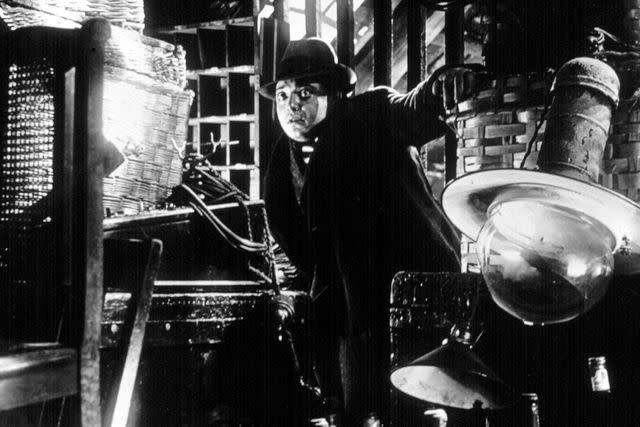
Everett Collection
Fritz Lang’s 1931 shocker is ground zero for both serial killer movies and police procedurals in general, with its influence even touching Seven and The Silence of the Lambs. Peter Lorre (who later became a famous character actor) stars as Hans Becker, a seemingly harmless man with a double life as a sadistic child killer. Becker’s crimes take place off-camera, but Lang’s direction ensures that they’re still horrific. The film’s most unsettling scenes connect Becker’s murder spree with the bloodlust of the German public, foreshadowing the Nazis’ rise to power just a few years later.
Freaks (1932)

Mary Evans/MGM/Ronald Grant/Everett Collection
Also directed by Tod Browning, this daring circus-themed horror movie disturbed audiences far more than Dracula the previous year — so much so that the film almost ended his career. The reason for their disgust? Browning’s casting of actual sideshow performers, like conjoined twins Violet and Daisy Hilton, little people Harry and Daisy Earles, and self-proclaimed “half-boy” Johnny Eck, in key roles. In more recent years, critics have re-evaluated Freaks as a landmark film, one that humanizes its disabled characters and presents the able-bodied people who exploit them as the true monsters.
The Old Dark House (1932)

Even when they’re set in creaky castles covered in spiderwebs — this one’s called The Old Dark House, for goodness’ sake — James Whale films always have an air of sophistication that makes them feel fresh and modern. That’s certainly true of this 1932 creep-fest, about a group of travelers stranded overnight at a foreboding Welsh manor that has more than one secret stashed away in its many upper rooms. The dialogue is witty and the characters are memorable, particularly Boris Karloff as hulking manservant Morgan.
Where to watch The Old Dark House: Tubi
Vampyr (1932)

Another European vampire film from the first half-century of cinema, Carl Theodor Dreyer’s 1932 fantasy-horror hybrid was a favorite of Alfred Hitchcock’s. It’s technically a “talkie,” although it was shot like a silent film; the dubbed dialogue from this technique adds to an air of unreality, which combines with the disjointed narrative and eerie visuals to give the film a nightmarish feeling. Shot with a disorienting sense of space and gauze over the camera lens, it’s as much an art piece as it is a scary movie.
Frankenstein (1931) / Bride of Frankenstein (1935)

Courtesy Everett (2)
Though both of these James Whale masterpieces hold up remarkably well, the 1935 sequel surpasses the original Frankenstein — itself a great movie — in terms of style. Modern critics have reclaimed Bride as a quintessential example of queer horror, pointing to its campy humor, queer-coded villain, and profound sympathy for the outcast Monster. Elsa Lanchester’s performance as the hissing, glamorous Bride — which was inspired, in part, by swans at the zoo — is fabulous as well, making a legendary impression with only seven minutes of screen time.
Where to watch Frankenstein: Amazon Prime Video (to rent)
Where to watch The Bride of Frankenstein: Amazon Prime Video (to rent)
Cat People (1942)

Everett Collection
The partnership of director Jacques Tourneur and producer Val Lewton resulted in some of the most striking horror films of the black-and-white era, beginning with this bold creature feature. Later remade as a sexy ‘80s thriller, the original Cat People is shot like a noir, making expressionistic use of shadows and light. There’s a fear of uncontrolled female sexuality in the film that’s incredibly impactful, despite only being hinted at on screen. And indeed, Tourneur and Lewton were masters of suggestion, partially because of the Production Code, and partially because of their low budgets.
Where to watch Cat People: Criterion Channel
The Seventh Victim (1943)
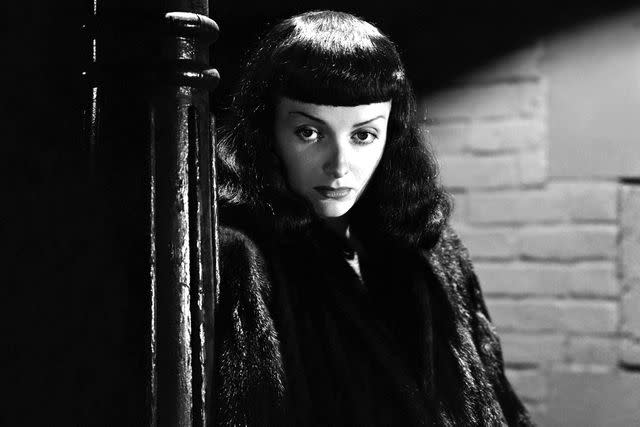
Courtesy Everett
Another Val Lewton production — this one directed by Mark Robson, editor of Lewton’s own Cat People — this 1943 horror film is notable for its modern setting. In an era where most horror films were still set in creaky old houses and faraway castles, The Seventh Victim moves the action to New York City's Greenwich Village. Its subject matter is provocative as well, using a Satanic cult as code for (gasp!) homosexuals in the neighborhood. Despite this potentially campy subtext, however, the film’s existential hopelessness leaves a bleak impression.
Where to watch The Seventh Victim: AppleTV+
Dead of Night (1945)

Everett Collection
Horror anthologies are a tradition in British cinema, and this collection of bite-sized frights is the granddaddy of them all. The core narrative revolves around a group of guests at a country cottage telling ghost stories, each of which is helmed by a different director. We’ve got ominous visions, ghostly children, haunted mirrors, and even lighthearted horror-comedy. But the most famous (and influential) segment is about a ventriloquist whose dummy comes to life, a story that has influenced countless works, namely a 1962 episode of The Twilight Zone and the underrated 1978 Anthony Hopkins vehicle Magic.
Where to watch Dead of Night: Kanopy
Creature from the Black Lagoon (1954)

This late-period entry into Universal’s classic monster series is also one of its most beloved: John Landis, John Carpenter, and Ivan Reitman were all attached to scrapped remakes at some point that were all dead in the water, though Guillermo del Toro later succeeded with The Shape of Water. The original film’s astonishing underwater photography certainly contributes to its appeal, but the oddly human Gill-man is the real draw. His designer, Millicent Patrick, was erased from the story of the film for nearly 50 years but has since regained her place as the mother of this unforgettable monster.
Where to watch Creature from the Black Lagoon: AppleTV+
Diabolique (1955)

John Springer Collection/CORBIS/Corbis via Getty
Director Henri-Georges Clouzot is sometimes referred to as the “French Hitchcock” — which isn’t wrong, exactly, as both men shared a talent for crafting suspense. But Clouzot’s movies are even more morbid and misanthropic than Hitchcock’s, especially Diabolique, his most famous film. It starts as a dark psychological thriller before morphing into something creepier and possibly more supernatural midway through. The film’s release in theaters came with a plea not to reveal the shock ending, so we won’t do so here. Suffice to say, you’ll never forget it.
Where to watch Diabolique: Max
House on Haunted Hill (1959)

Everett
Vincent Price is an icon of classic horror, and this 1959 chiller gave him one of his greatest roles as a millionaire who invites five people to a “haunted house party” at his imposing modernist mansion. His offer? Stay the whole night and win $10,000. Price is deliciously diabolical in the film, which is full of literal and metaphorical trap doors and secret passageways. Producer and director William Castle was known for his gimmicks, and this movie has a good one: Emergo, in which a skeleton on a string flies over the audience’s heads during a key scene.
Where to watch House on Haunted Hill: Tubi
Black Sunday (1960)
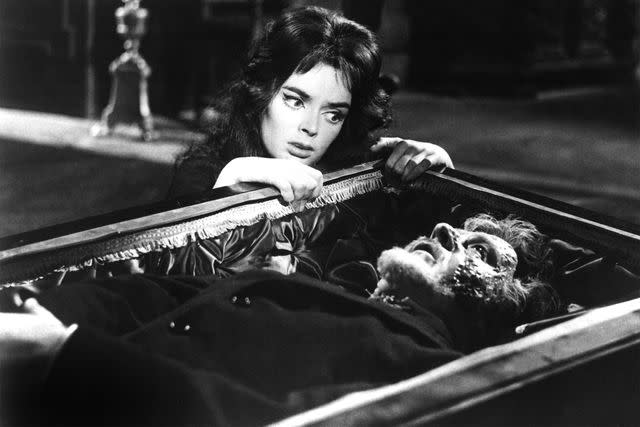
Inspired by the Universal monster movies director Mario Bava adored as a youth, this Italian fright flick launched both his career and that of star Barbara Steele. Blending gothic atmosphere and ghastly horror, the film is full of unforgettable images: The witch Aja (Steele) being tortured before she’s burned at the stake; an undead sorcerer digging himself out of his grave; Aja’s tomb exploding with the power of her rage. Steele’s performance as the evil, immortal witch will make your blood run cold, with her steely distance contrasting with the movie’s lush black-and-white cinematography.
Where to watch Black Sunday: Tubi
Eyes Without a Face (1960)

Released the same year as Black Sunday, this horror outing from French director Georges Franju combines skilled artistry and grotesque gore in a way that’s even more radical than Bava’s film. The culprit here is a sequence where a deranged surgeon (Pierre Brasseur) attempts to graft a new face onto his daughter’s disfigured one, a scene that — while mild by today’s standards — horrified audiences in 1960. That being said, there’s more going on here than shock value, as Franju’s film also excels as a beautifully shot work of art and as a haunting meditation on identity.
Where to watch Eyes Without a Face: Max
Peeping Tom (1960)

Everett Collection
Released mere months before Psycho changed the game, its British cousin is arguably even more provocative in the way it implicates the audience in the actions of cinephile serial killer Mark Lewis (Carl Boehm). With its sadistic violence, taboo sexuality, and grim depiction of postwar London, Peeping Tom was a flop that essentially ended the illustrious career of director Michael Powell, falling into obscurity until Martin Scorsese rescued it and rehabilitated its reputation with a 1979 re-release.
Where to watch Peeping Tom: Tubi
Psycho (1960)
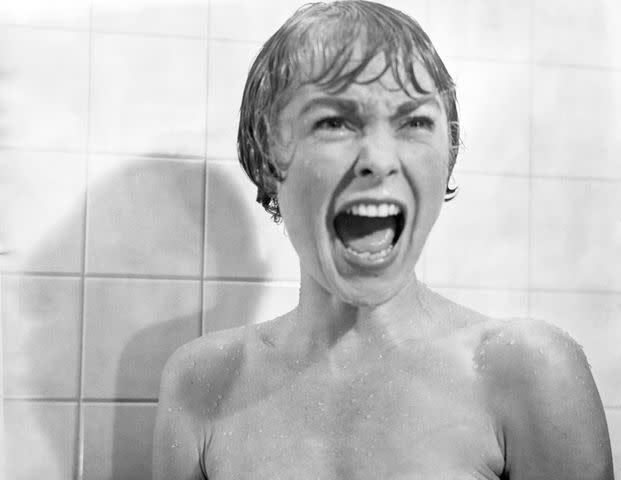
There are two eras, not just of horror but of movies in general: pre-Psycho and post-Psycho. Extremely shocking and violent for its time, Alfred Hitchcock’s macabre psychological thriller “opened an abyss, exposing moviegoers to a dark side that few, at the time, could ever have dared to imagine,” EW’s critic writes. The film’s masterfully crafted, instantly infamous shower scene changed horror filmmaking forever, but it wasn’t Hitchcock’s only innovation; it was also the first film to enforce timed ticketing, forbidding late entry so as not to spoil the big twist.
Where to watch Psycho: AppleTV+
The Innocents (1961)

20th Century Fox Film Corp./Courtesy Everett
The epitome of an old-fashioned haunted house chiller, The Innocents has everything you could want in a ghost story: A 19th-century setting, an old dark manor, a woman on the verge, stunning cinematography, and some creepy kids for good measure. Based on Henry James’ The Turn of the Screw, the story — about an emotionally unstable governess (Deborah Kerr) who becomes convinced that there’s something very wrong with her young charges — has inspired multiple films and TV series, including Mike Flanagan’s The Haunting of Bly Manor.
Where to watch The Innocents: The Criterion Collection
Carnival of Souls (1962)

Herk Harvey’s 1962 low-budget oddity is the definition of a cult classic. Produced on a shoestring budget, the film barely made a ripple on its initial release. It gained popularity, and eventually classic status, through word of mouth and multiple airings on late-night TV, where its bizarre and otherworldly atmosphere (including the soundtrack’s organ music) took on the aura of a nightmare. The story blends supernatural horror with a twist reminiscent of The Twilight Zone, following a church organist (Candace Hilligoss) whose cross-country road trip after a fateful car accident is beset with ghostly horror.
Where to watch Carnival of Souls: Max
Black Sabbath (1963)

Unlike Dead of Night, this 1963 anthology film was helmed entirely by one person: Black Sunday’s Mario Bava. In some ways, it’s more of a showcase for its director than it is for Boris Karloff, who stars in the vampire short “The Wurdalak.” The stories are notably in color, which is where Bava truly thrives as an artist, and there are scenes of supernatural suspense that are truly breathtaking (in multiple senses of the word). Other segments feature a woman being stalked by telephone and a nurse whose decision to steal a ring from a corpse turns out to be very ill-advised. (And yes, it is where the band got its name.)
Where to watch Black Sabbath: Tubi
The Haunting (1963)
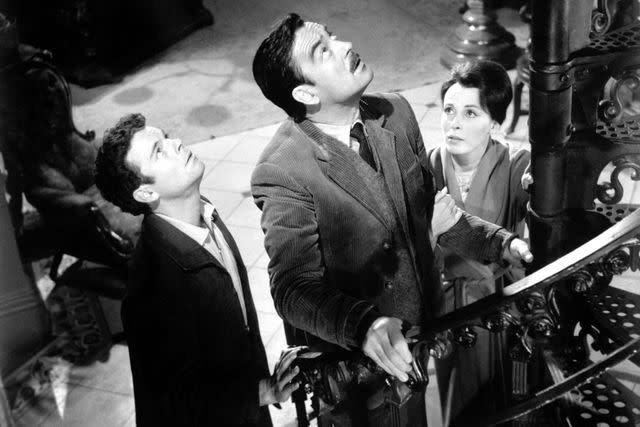
Although it’s rated G, Robert Wise’s psychological horror movie still has an edge to it. How could it not, given that it’s adapted from a Shirley Jackson novel? The premise is classic: A group of psychics and skeptics is invited to the foreboding Hill House to participate in a study of the supernatural. And the supernatural does show up, although Wise’s slow-burn approach means that the film is blessedly free from conventional jump scares. It’s all about the details with this one, including a queer subtext that was years ahead of its time.
Where to watch The Haunting: AppleTV+ (to rent)
Kwaidan (1964)
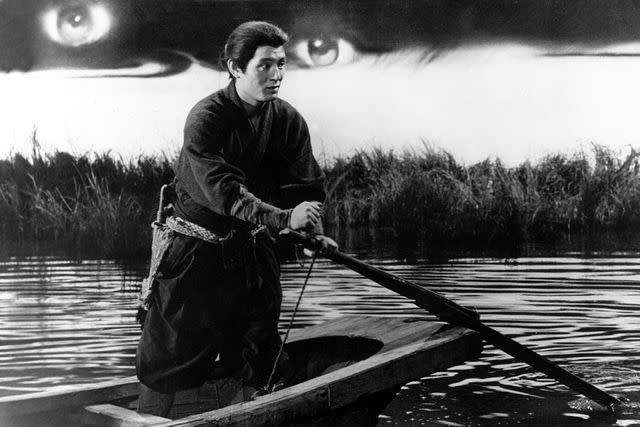
Mary Evans / NINJIN CLUB / BUNGEI / Ronald Grant / Everett Collection
Based on a book of Japanese folktales, this anthology horror film gets its name from an antiquated word for “ghost story.” That suits its otherworldly and somewhat formal tone, which takes viewers deep into Japan’s mythical past for a quartet of eerie tales about lonely ghosts and vengeful spirits who bring supernatural justice to selfish and immoral humans. At the time, it was the most expensive Japanese film in history, and the dazzling colors and gloriously stylized sets are worth a watch alone. There are no weak links in the collection, either — a rare achievement for an anthology film.
The Masque of the Red Death (1964)

Courtesy Everett
Vincent Price and Roger Corman were major players in the horror scene of the early ‘60s, thanks in no small part to the success of their collaborations on the “Poe cycle.” The series, based on stories by Edgar Allen Poe, reached its creative high point with this proto-psychedelic fairy tale, whose bright colors and delirious mood predicted a groovy art movement that was then just around the corner. Price stars as Prospero, a callous prince who throws a masked ball while a plague rages just outside his castle — but then an unexpected guest arrives to spoil the party.
Where to watch The Masque of the Red Death: PlutoTV
Rosemary’s Baby (1968)
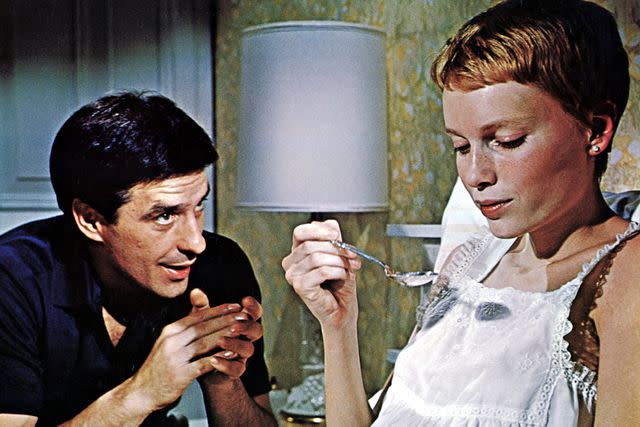
The world was changing in 1968, and Roman Polanski’s horror hit reflects the turbulence of its era. The film delves into the then-trendy topic of the occult, adapting Ira Levin’s best-selling novel about a pregnant woman (Mia Farrow) in a stylish Manhattan apartment building who slowly realizes that her husband (John Cassavetes) is in league with the Satanists downstairs. In a 2004 article naming it one of the 13 scariest movies of all time, EW called it “more conspiracy thriller than horror movie,” reflecting both Farrow’s iconic, fragile performance and the paranoid mood of the times.
Where to watch Rosemary’s Baby: Paramount+
Related content:
Read the original article on Entertainment Weekly.


